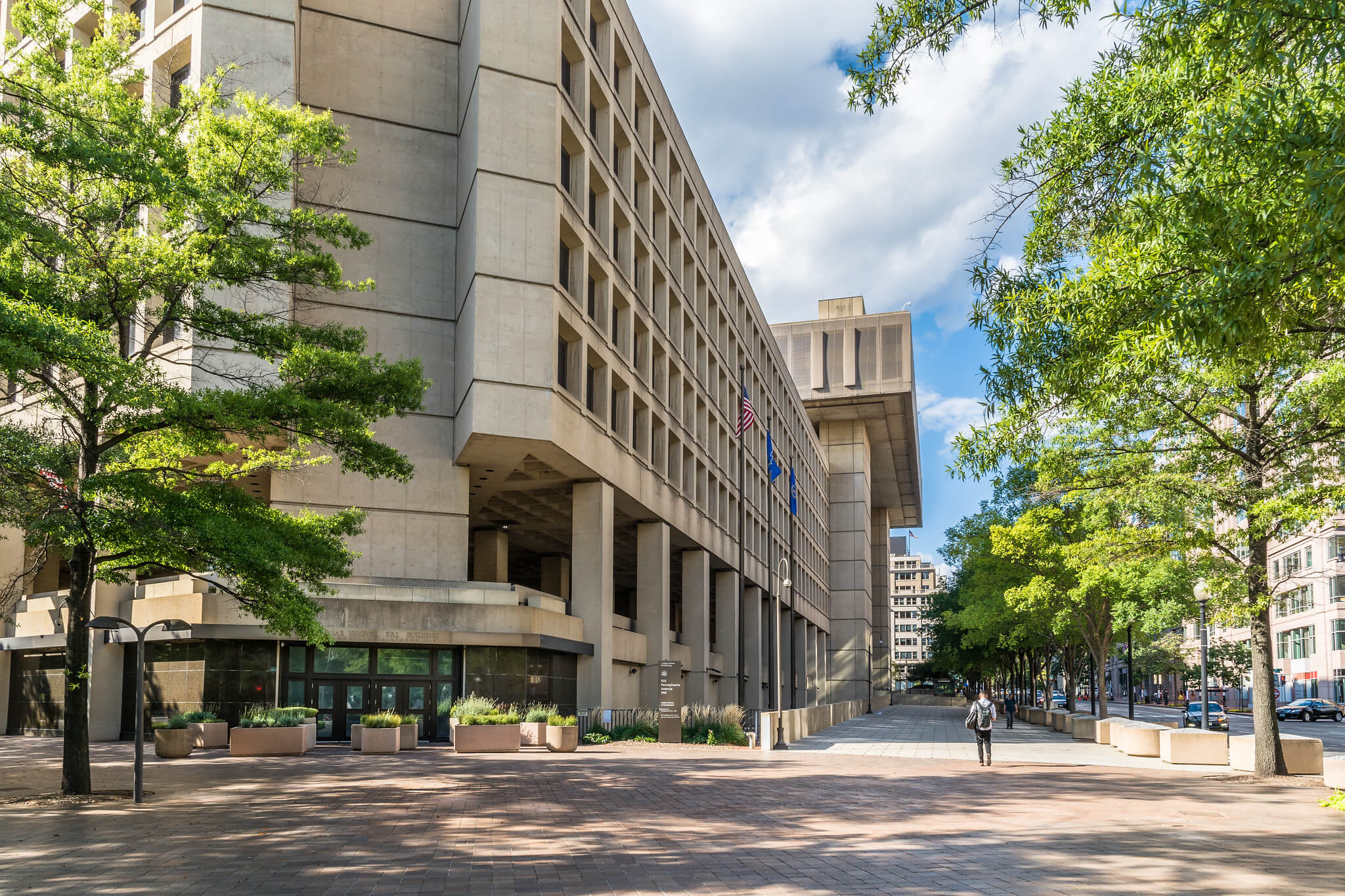The General Services Administration (GSA) is, again, shuffling the deck—and many are none too pleased.
The FBI announced on July 1 it is vacating its Brutalist headquarters, the J. Edgar Hoover Building designed by Charles F. Murphy. It will move into the nearby Ronald Reagan Building, designed by James Ingo Freed of Pei Cobb Freed & Partners. Many FBI employees will be siphoned off to suburban office spaces outside Washington, D.C.
Separate but related, the U.S. Department of Housing & Urban Development (HUD), located at the Robert C. Weaver Federal Building designed by Marcel Breuer, will relocate to a new address in Alexandria, Virginia. HUD secretary Scott Turner has plans to fit out the Virginia office building with an executive suite just for him, five personal parking spaces, and a gym exclusively for him and his family.
So much for “downsizing”…
The Government Accountability Office has reported operational problems at the Hoover Building since 2011. GSA Acting Administrator Stephen Ehikian said this week the Hoover Building suffers from an “aging water system” and “concrete falling off the structure.”
FBI director Kash Patel said in a statement the FBI’s move is two decades in the making. “This is a historic moment for the FBI,” he said. “Moving to the Ronald Reagan Building is the most cost effective and resource efficient way to carry out our mission to protect the American people and uphold the Constitution.”
The Reagan Building housed the U.S. Agency for International Development (USAID), Customs and Border Protection (CBP), and other tenants. The Trump administration effectively dissolved USAID when it canceled 83 percent of its contracts, which researchers recently estimated could lead to the deaths of 14 million people by 2030.
The Hoover Building was completed in 1975 and the Reagan Building, 1998. Architecturally, the latter is perhaps closer to the future the Trump administration imagines for the nation’s capital: Modern offices and building systems cloaked behind a thin post-postmodern facade sort of hearkening back to Neoclassicism, and the founding father’s Greco-Roman fetishes.
Discontents Abound
GSA Public Buildings Service Commissioner Michael Peters said the FBI’s move to the Reagan Building will save U.S. taxpayers $300 million in deferred maintenance costs that the Hoover Building had racked up. This claim, of prioritizing efficiency and saving taxpayers money, is something Deane Madsen, BrutalistDC founder, pokes holes in.
“There’s nothing efficient about avoiding $300 million in deferred maintenance; that’s just kicking the can down the road—or, to abuse the metaphor, throwing the can into the ocean and buying another six-pack,” Madsen told AN. “If the GSA, or the administration it serves, were truly interested in efficiency, it would rehabilitate and repurpose the existing FBI building, which may cost more in the short term, but save time and money in the longterm over retrofitting the Reagan Building to suit a purpose for which it was never intended.”
“But the FBI as an agency has already decided that its purpose has outgrown the building in which it currently resides; the amount of thought given to this GSA proposal seems commensurate with how much the current administration values the agency in question,” Madsen added.
Eric Jenkins, an architecture professor at the University of Maryland, formerly at Catholic University, has taught adaptive reuse studios centered upon the Hoover Building’s future; and is also skeptical. “It’s too easy to criticize Brutalist architecture and modern architecture of the 1970s,” Jenkins told AN. “As we know, it’s too easy to critique the new, the untested, and those who take risks.”
“Architects and urban designers at that time were trying to find new ways to address how people lived and worked in the city and its architecture,” Jenkins elaborated. “The results, while mixed, at least had integrity. The work is not trying to be anything but what it is. Unlike the classical architecture favored by the current administration, it’s truthful; it’s not hiding modern systems behind a false facade.”

On Hoover Building tours with students, Jenkins observed how “employees enjoyed its vibrant, multi-level, sectionally complex courtyard that was filled with music, color, light, and vegetation,” he said. “They used its open, exterior piano nobile, which separates the ground floor plinth from the office block, as a track and fitness center; they jogged its perimeter just above street level.”
Vivacious, Engaging, and Deliberate
It is unclear at this time what will happen to the J. Edgar Hoover Building, like the Robert C. Weaver Building, or who their buyers will be, although the relocation may not be permanent.
In January, National Civic Art Society president Justin Shubow told CoStar News that “President Trump likely wants a new classical FBI building on its key site on Pennsylvania Avenue,” referring to a post Trump had previously made on Truth Social.
Capital Brutalism, at the National Building Museum, explored the history of these two buildings, and others, in Washington, D.C. The show was a defense of sorts for Federalist Brutalism, which has clearly fallen out of favor with the White House. Still, those who appreciate Federalist Brutalism remain steadfast.
“There’s immense embodied energy and thoughtfulness in the [Hoover] building,” Jenkins said. “It would be unfortunate to simply tear it down and replace it with yet another ubiquitous corporate building that we see throughout the United States. The building is unabashedly vivacious. It engages; it is deliberate. It is tactile and expressive and thus engages with us on a visceral level.”
“I think there is hope and optimism in this building,” Jenkins continued. “The architects looked forward, which is difficult. It’s easy to look back and emulate—copy—the past or use formulaic processes, but I think it’s more difficult to design architecture that embodies our time, and anticipates the future.”
→ Continue reading at The Architect's Newspaper
